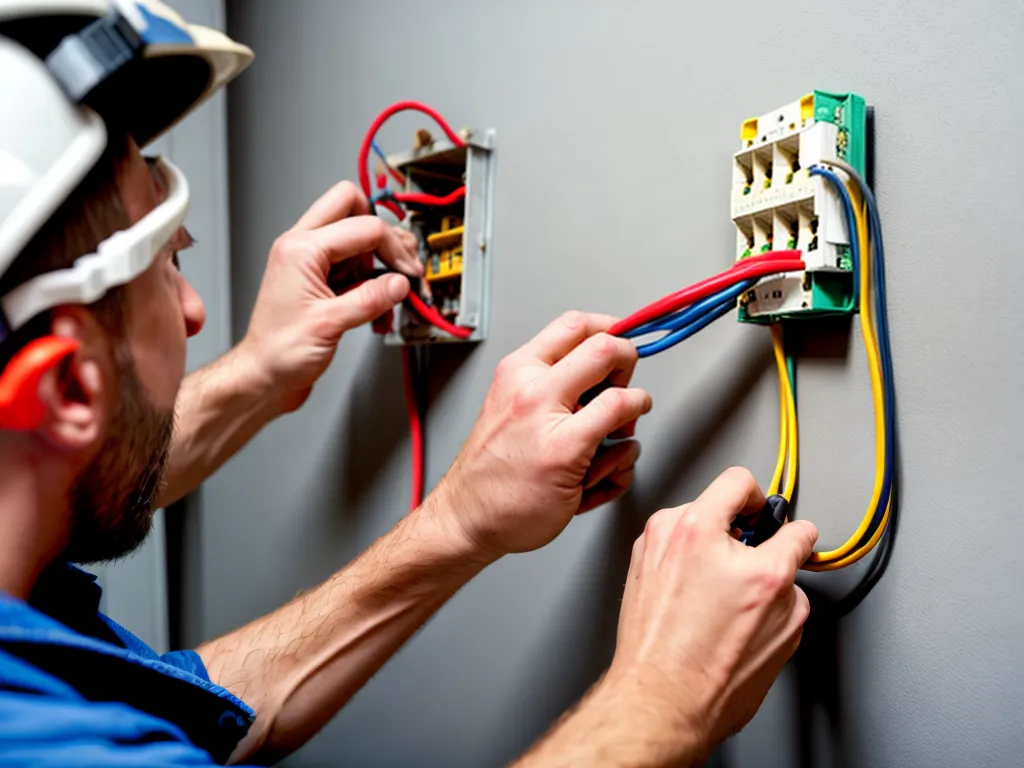
Introduction
Installing electrical wiring in your home can be a daunting task, but with proper planning and adherence to electrical codes and safety practices, it can be done safely by a homeowner. As a homeowner looking to install wiring, educating yourself is the first critical step.
Dangers of Improper Electrical Work
Improper electrical work poses serious fire and electrocution hazards. Faulty wiring is the cause of over 40,000 home fires every year in the US alone. Without proper knowledge and safety precautions, you are risking not just your safety but also the safety of your family and home. This is why electrical work is best left to licensed electricians in many cases.
However, minor jobs like installing a new light fixture or outlet can often be safely DIYed by a homeowner with adequate research and preparation.
When to Call an Electrician
While minor electrical work can be DIYed, it's best to call a licensed electrician for:
- Major wiring jobs like rewiring a whole room or home
- Upgrading electrical service panel and cables
- Installing 220-240V circuits like for HVAC units or electric ovens
- Any work involving connecting wires to the main electrical service panel
Houses older than the 1970s often have outdated and hazardous materials like aluminum wiring and knob-and-tube wiring. These should always be inspected and upgraded by a professional before any DIY electrical work.
Safety Gear Needed
Before any electrical work, assemble the proper safety gear:
- Safety goggles - for eye protection
- Insulated gloves - for working with wires
- Voltage tester - for checking if wires are live
- Clamp meter - for diagnosing electrical issues
- Circuit breaker finder - for identifying circuits
- Non-contact voltage detector - for checking live wires safely
You should also turn off power at the main breaker panel and wear appropriate non-conductive clothes and shoes.
How to Turn Off Power
-
Locate the main breaker panel in your home. It is usually in the basement, garage or utility room.
-
Open the metal door on the main panel. Locate the main breaker. It is normally marked "main" and may be larger than other breakers.
-
Shut off the main breaker by flipping the switch to the "OFF" position.
-
For extra safety, you can also switch off the individual circuit breakers powering the rooms you'll be working on.
-
With a non-contact voltage detector, check wires to confirm power is off before working.
Buying the Right Materials
Make sure all electrical materials are UL approved and rated for their intended purpose. Key supplies needed include:
- UL listed wires like 14/2 or 12/2 NM-B cables
- Wire connectors - wire nuts or push-in connectors
- Electrical boxes - plastic or metal
- Conduit - EMT thin wall or PVC
- Wall plates - match your switches and outlets
The proper wire gauge (AWG) must be used - 15A circuits need 14 AWG wire minimum, 20A circuits need 12 AWG.
How to Run and Secure Wires
- Carefully measure and cut wires to necessary length using wire strippers. Leave extra length for connections.
- Fish wires through walls using fish tape. For new wiring, you can also cut wall slots with a drywall saw.
- Secure wires by attaching them to wall studs using insulated staples. Keep them at least 1/4" from edge of studs.
- Leave around 8" of extra wire at outlets and switches to make connections.
Connecting Switches and Outlets
- Strip about 1/2" of insulation from wire ends using wire strippers.
- For outlets, hook hot (black) wire around hot screw, neutral (white) wire around neutral screw. For switches, connect hot and switched hot wires to screws.
- Secure wires by tightening terminal screws firmly with a screwdriver.
- Attach ground (green/bare) wires together with a wire connector. Connect them to ground screws on outlets.
- Check for no exposed wire and good mechanical connections.
- Carefully tuck wires into electrical boxes, then mount devices with mounting screws.
Finishing Touches
- Use wire nuts to bundle & isolate unused wires.
- Install wall plates to cover boxes.
- Label all circuits clearly on breaker panel.
- Test operation of outlets and switches safely before re-energizing circuits.
Testing and Turning Power Back On
- Double check all connections were made properly and safely.
- Flip on individual circuit breaker for the affected rooms first.
- Turn main breaker back on. Step away from panel while turning on.
- Carefully test operation of wiring with lamp/device plugged in.
If new wiring does not function properly or breakers trip, you likely have an issue like a short circuit or loose connection. Consulting an electrician is recommended.
Conclusion
Installing basic wiring like outlets and switches certainly can be DIYed safely by a homeowner that educates themselves on proper techniques and safety. But larger electrical jobs should always be left to licensed electricians only. Patience, caution, and strict adherence to local electrical codes are a must for safety.